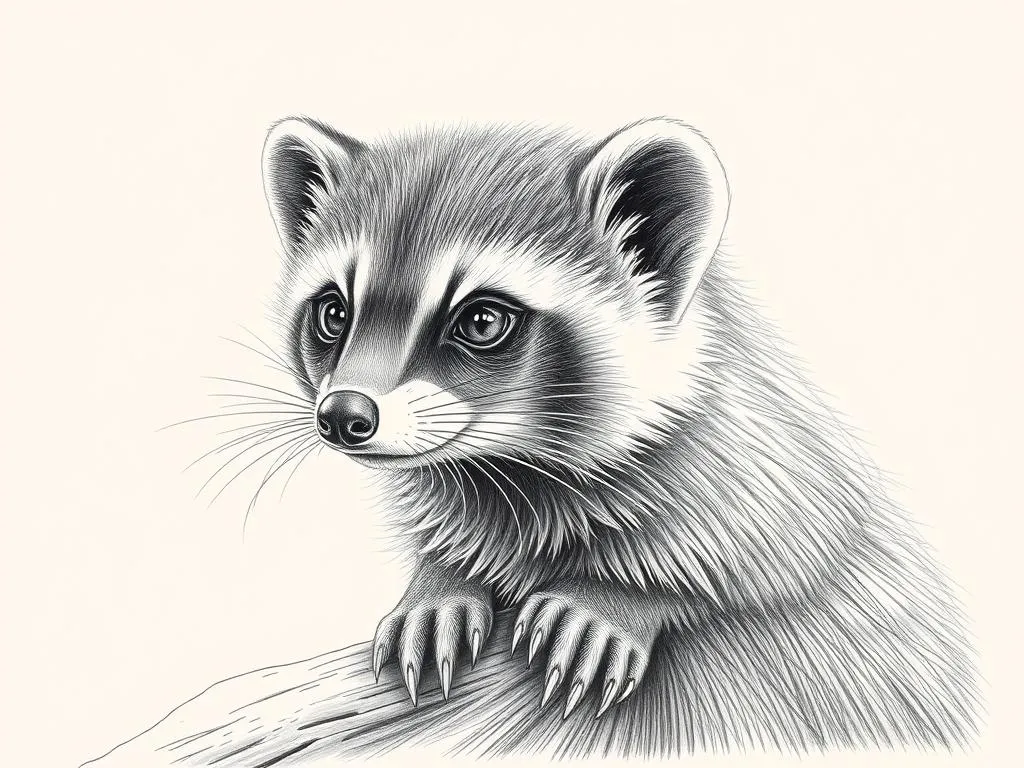The Hidden Symbolism of the Asian Palm Civet: A Journey into Its Spiritual Significance

Disclaimer: Some images on this website are AI-generated artworks and may not accurately represent real animals.
The Asian palm civet holds a unique place in various cultures across Asia, not only as a fascinating creature but also as a symbol rich with meaning. This article explores the symbolic significance of the Asian palm civet, delving into its characteristics, cultural relevance, and spiritual interpretations.
Understanding the Asian Palm Civet
Overview of the Asian Palm Civet: Habitat and Characteristics
The Asian palm civet (Paradoxurus hermaphroditus), also known as the common civet, is a small mammal native to Southeast Asia. Found in countries like Indonesia, Malaysia, and Thailand, these creatures inhabit tropical forests, plantations, and urban areas. Their adaptability to different environments is a testament to their resilience and resourcefulness, traits that resonate deeply in their symbolism.
Asian palm civets are medium-sized mammals, characterized by their elongated bodies, small heads, and long tails. Their fur is typically a mix of gray and brown, adorned with dark spots or stripes, allowing them to blend seamlessly into their surroundings.
| Physical Characteristics | Description |
|---|---|
| Length | 60-90 cm (including tail) |
| Weight | 5-10 kg |
| Lifespan | 12-15 years in the wild |
| Diet | Omnivorous (fruits, insects, small animals) |
| Behavior | Nocturnal and solitary |
Unique Traits: Nocturnal Behavior and Diet
As nocturnal creatures, Asian palm civets are primarily active during the night. This behavior aids in their survival, allowing them to avoid predators and seek food in the cover of darkness. Their diet mainly consists of fruits, particularly coffee cherries, which has made them famous in the production of Kopi Luwak, a type of coffee made from beans digested and excreted by civets.
Their adaptability in diet and habitat showcases their ability to thrive in various environments, reinforcing their symbolism of adaptability and resourcefulness.
Cultural Significance in Various Asian Countries
In many Asian cultures, the civet is regarded with a mix of reverence and curiosity. In some regions, they are seen as symbols of good luck and prosperity. For example, in Indonesia, the civet is often associated with the coffee trade, with the belief that their presence can improve the quality of coffee.
Conversely, in other cultures, civets are linked to more mystical aspects, embodying the spirit of the jungle and the interconnectedness of life. This cultural significance enriches the symbolism and meaning associated with the Asian palm civet.

Symbolism and Spiritual Meaning
The Civet as a Symbol of Adaptability and Resourcefulness
The Asian palm civet epitomizes adaptability, a quality that is vital for survival in ever-changing environments. They can thrive in both natural and urban settings, demonstrating that challenges can be turned into opportunities. This symbolism encourages individuals to embrace change and cultivate resourcefulness in their own lives.
Connection to Nature: The Balance of Ecosystems
Civets play a crucial role in their ecosystems, acting as seed dispersers and contributing to the balance of plant life. Their diet helps maintain the health of forests, signifying the importance of interconnectedness within nature. The civet serves as a reminder of our responsibility to protect the environment and preserve the delicate balance of ecosystems.
The Role of the Civet in Folklore and Mythology
Throughout Asian folklore, the Asian palm civet often appears as a mystical creature filled with wisdom and insight. In various myths, they are depicted as guides for travelers, leading them through the darkness to safety. This portrayal enhances their symbolism of curiosity and exploration, inspiring individuals to seek knowledge and understanding in their own spiritual journeys.
Representation of Curiosity and Exploration
The civet’s inquisitive nature reflects a deep-seated desire for exploration. This symbolism encourages individuals to remain open-minded and curious about the world around them. By embracing a sense of exploration, one can uncover new opportunities and experiences that contribute to personal growth.
The Asian Palm Civet in Dreams
Interpreting Civet Sightings in Dreams
Dreams featuring the Asian palm civet can carry significant meanings. Often, these dreams symbolize a phase of transition or the need for adaptability in waking life. Spotting a civet in a dream may signal that it’s time to embrace change or explore new avenues.
Symbolic Meanings of Civets in Dreamscapes
| Dream Scenario | Symbolic Meaning |
|---|---|
| Seeing a civet | Embrace change and adaptability |
| A civet guiding you | Guidance through life’s challenges |
| A civet in danger | Warning of neglecting one’s resources |
| Interacting with a civet | Curiosity leading to new opportunities |
Common Dream Scenarios Involving the Civet
In dreams, the Asian palm civet might appear in various scenarios. For instance, if one dreams of a civet guiding them through a forest, it may represent the journey of self-discovery and the importance of trusting one’s instincts. Alternatively, a dream where a civet is in danger could indicate a need to assess and safeguard personal resources and opportunities.
Modern Interpretations
The Civet in Popular Culture: Film, Literature, and Art
The Asian palm civet has also made its mark in modern culture. In films and literature, civets are often depicted as symbols of mystery and the exotic, capturing the imagination of audiences. They serve as a reminder of the intricate relationship between humans and wildlife, urging us to appreciate and protect these unique creatures.
The Civet’s Role in Environmental Awareness
In recent years, the civet has gained attention for its role in environmental discussions. As coffee producers increasingly focus on sustainable practices, the Asian palm civet has become a symbol of responsible consumption. This shift emphasizes the importance of wildlife preservation and highlights the interconnectedness of all living beings.
Lessons from the Civet: Sustainability and Responsibility
The civet teaches valuable lessons about sustainability and responsibility. By understanding their role in the ecosystem, individuals are encouraged to reflect on their own habits and their impact on the environment. The civet’s symbolism acts as a catalyst for fostering a deeper connection with nature and inspiring sustainable practices.
Key Takeaways
- The Asian palm civet symbolizes adaptability, resourcefulness, and the importance of balance in ecosystems.
- In various cultural contexts, civets represent curiosity and exploration, encouraging personal growth and self-discovery.
- Dreaming of civets can indicate transitions or a need for adaptability in waking life.
- The civet serves as a reminder of the interconnectedness of all life and the importance of wildlife conservation.
- Understanding animal symbolism can inspire individuals to reflect on their personal journeys and their connection to nature.
Conclusion
Reflecting on the spiritual journey with the Asian palm civet, we uncover layers of meaning that resonate deeply within us. This creature embodies qualities that encourage us to embrace change, cultivate curiosity, and foster a sense of responsibility toward our environment.
As we explore our personal symbolism and connection to nature, let us remember the intricacies of wildlife and the role they play in shaping our cultural identity and spirituality. The Asian palm civet stands as a testament to the beauty of nature and the wisdom it imparts, urging us to cherish and protect the world around us.







